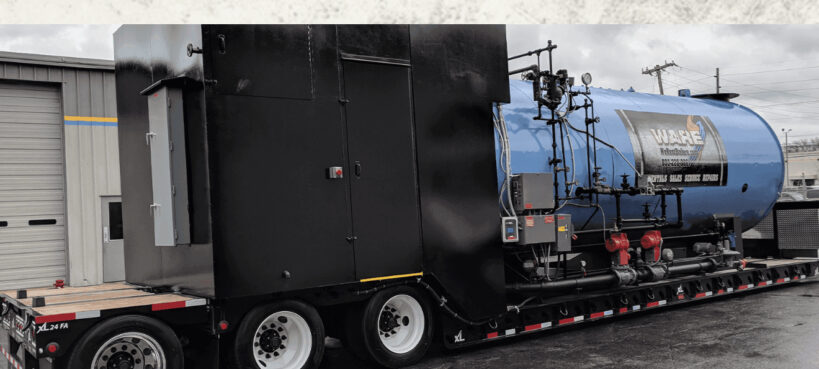
What is a Boiler Blowdown?
Water quality is an important factor in determining boiler performance. Water is turned into steam, leaving behind dissolved particles such as minerals, salts, and other contaminants. Over time, these materials collect, generating deposits that can impede heat transfer, impair efficiency, and damage components.
Blowdown is the technique of eliminating pollutants from a boiler by purposely discharging water. This inhibits the accumulation of solids, allowing the boiler to run smoothly and effectively.
Two Types of Blowdowns
Boiler blowdown comes in two unique types, each providing a specific purpose:
- Continuous blowdown.
Continuous blowdown is the continual, regulated release of water during boiler operation. Its primary function is to ensure constant water quality by regulating the concentration of dissolved solids. - Intermittent blowdown
Intermittent—or manual—blowdown occurs on a regular basis, usually near the boiler’s bottom, where sludge and heavier impurities accumulate. This procedure is more forceful, focusing on eliminating settled material that continual blowdown cannot handle.
Why Blowdown is not negotiable
Ignoring blowdown may save you a few minutes today, but it could cost you hours—and probably thousands of dollars—in the future. Here’s why it matters:
- Prevents scale formation.
Minerals in untreated water can cause scale deposits on heat transfer surfaces, decreasing efficiency and increasing fuel consumption. - Reduces corrosion risk.
Impurities can build up in the boiler, creating an environment conducive to corrosion and jeopardizing its structural integrity. - Improves efficiency.
A boiler that is free of deposits runs more effectively, using less fuel to produce the same volume of steam. - Extends equipment life.
Regular blowdown protects against long-term damage, lowering the chance of expensive repairs or premature replacement.
The Blowdown Procedure: Simple but Crucial
While blowdown may seem simple, there is a good way—and several bad ways—to execute it.
- Assess water quality.
The concentration of dissolved solids can be determined through water testing. This will determine the frequency and amount of blowdown required. - Determine the correct blowdown rate.
Impurities accumulate when there is insufficient blowdown, whereas excessive blowdown wastes water and energy. Strike a balance between your system’s needs and manufacturer suggestions. - Follow proper procedures.
To prevent water hammer or pressure surges during intermittent blowdown, progressively open the valve. Allow water to discharge until the flow is clean of silt. - Monitor and adjust.
Continuously monitor water chemistry and adapt the blowdown schedule to meet changing operating demands.
Common Mistakes to Avoid
Even experienced operators can develop undesirable habits when it comes to blowdown. Here are some hazards to look out for:
- Skipping Blowdown
Skipping blowdown, whether by mistake or in an attempt to save time, is a surefire way to invite catastrophe. - Over-blowdown.
Excessive blowdown wastes water, energy, and chemicals, raising operational expenses unnecessarily. - Ignoring water chemistry.
Blowdown without regular water testing is like driving blindfolded: risky and perhaps disastrous.
Technology to the Rescue.
Modern boilers frequently include automated blowdown systems, which eliminate the guesswork involved in the procedure. These systems continuously monitor water chemistry and alter the blowdown rate accordingly, resulting in optimal performance with no intervention.
While automation can improve processes, it cannot replace frequent oversight and maintenance by qualified staff.
The Bottom Line
Boiler blowdown may not be showy, but its significance cannot be understated. By reducing dissolved solids, blowdown protects your boiler from damage, increases efficiency, and extends its service life—all while keeping your business operating smoothly.
Boileroperators.org specializes in assisting businesses with their boiler systems by providing expert advice, maintenance services, and cutting-edge technologies. Contact us today to learn more about how we can help you meet your steam generating demands and keep your equipment running smoothly.
